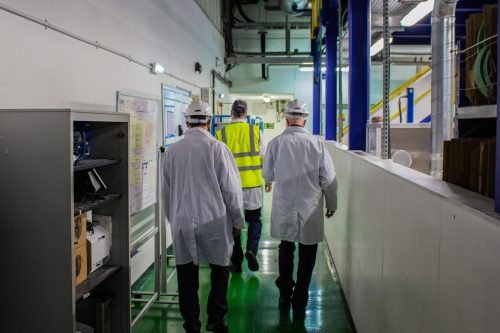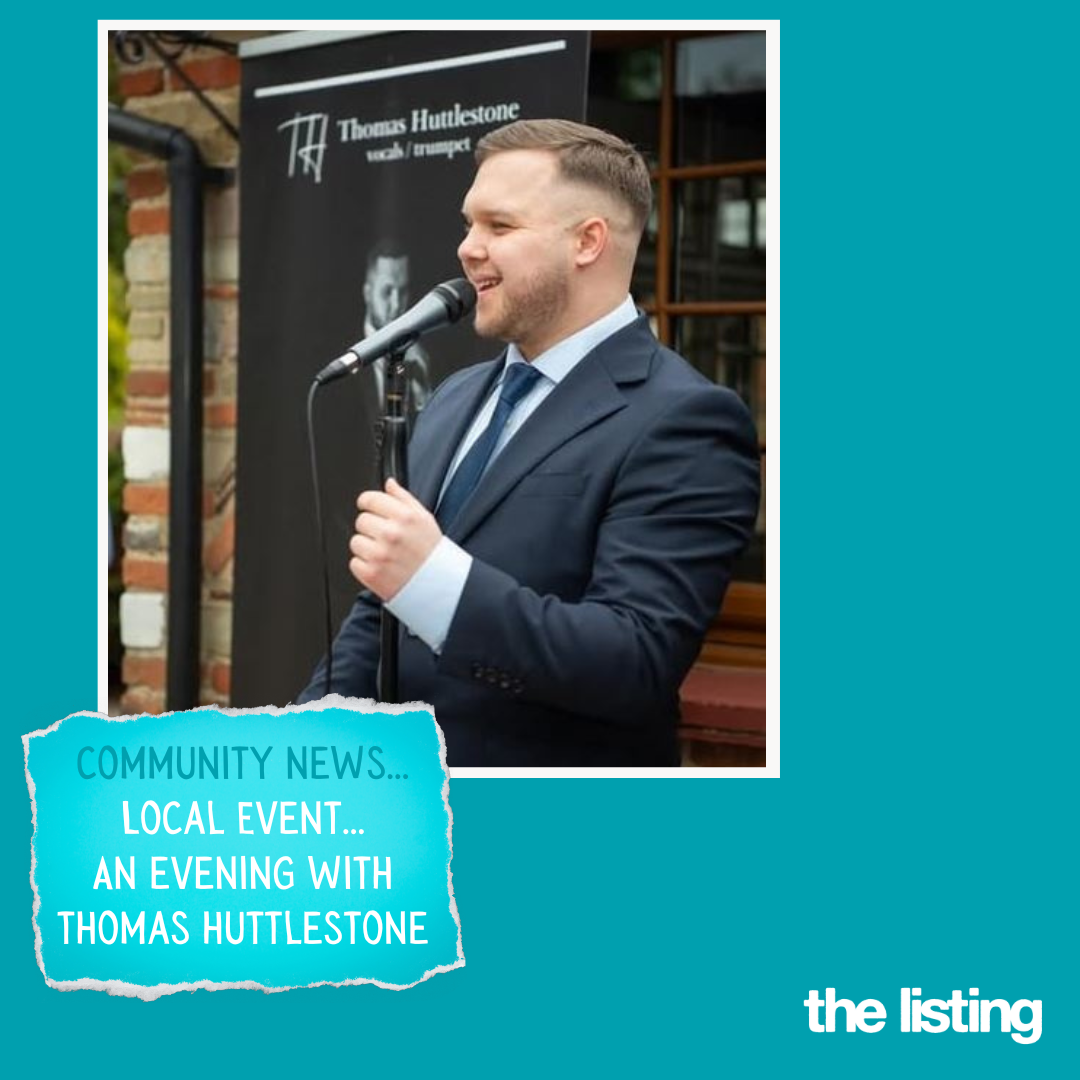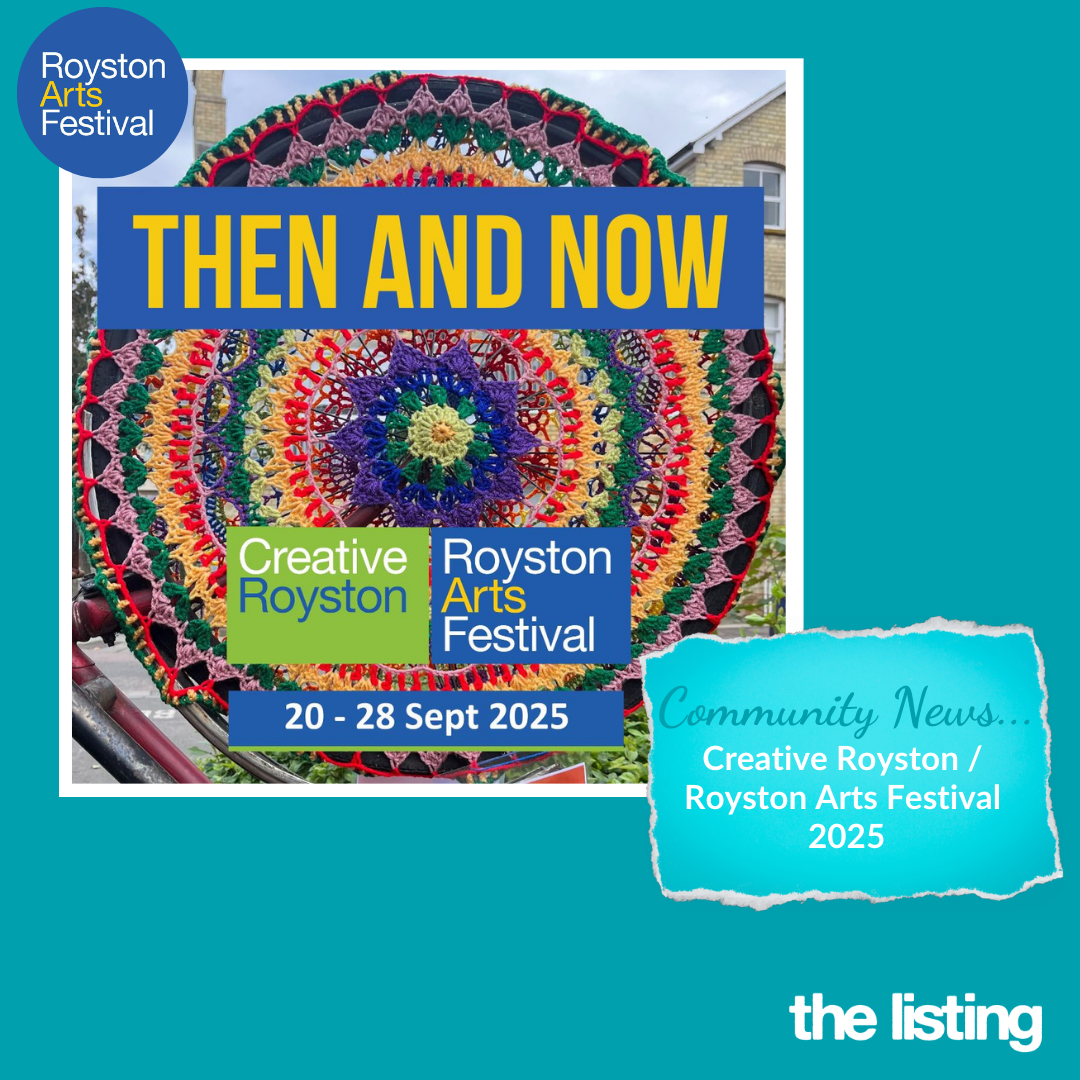Ever since I moved from London to Royston 25 years ago, I’ve wondered what goes on at Johnson Matthey (JM). As a last contribution to the year-long ‘Hidden Royston’ series in The Listing I decided to find out.
 Security is tight – before making the visit with photographer David Waters, we were sent a list of do’s and don’ts. Don’t bring phones, computers, cameras or recording equipment (by special arrangement we had both camera and digital recorder), do bring photo ID and wear protective clothing as required. The security is primarily about retaining intellectual property – the company has developed its cutting-edge technology over 200 years and wishes to protect it. It operates in an increasingly competitive market – cleaning the air we breathe – at a time when it’s probably never been easier to record and transmit information around the world. That the company deals in some very precious metals (legend has it that 20 years ago there was more gold in Royston than in the Bank of England) is another good reason for the airport-style body search on leaving the site.
Security is tight – before making the visit with photographer David Waters, we were sent a list of do’s and don’ts. Don’t bring phones, computers, cameras or recording equipment (by special arrangement we had both camera and digital recorder), do bring photo ID and wear protective clothing as required. The security is primarily about retaining intellectual property – the company has developed its cutting-edge technology over 200 years and wishes to protect it. It operates in an increasingly competitive market – cleaning the air we breathe – at a time when it’s probably never been easier to record and transmit information around the world. That the company deals in some very precious metals (legend has it that 20 years ago there was more gold in Royston than in the Bank of England) is another good reason for the airport-style body search on leaving the site.
Alongside security, health and safety is another top priority at JM, as befits a company that has worked in chemicals, safely as far as I am aware, for those two centuries. Our two-hour tour takes us up and down different operating levels (hold the handrails) surrounded by mysterious substances (stick to the walkways, wear safety glasses when instructed to do so, don’t touch!) We survey heavy duty machinery (hard hats and steel-capped boots are provided, working space is segregated with colour-coding), the environment is pristine but noisy (but only once did we need ear protection). Clean, sustainable and safe working processes appear to permeate the whole operation.
Once safely inside the JM catalyst division (catalyst research, design and production is just one of seven JM businesses operating across the Orchard Road site) we were given some basic facts and figures by Operations Manager Sean Hagger.
Facts and figures: Sean explains some basics about the business: “What do we do here? We make different types of catalysts for cars, lorries, and off-road vehicles such as cranes and tractors. A catalyst transforms waste gas from a combustion engine into something we can breathe in the outside world. We make a paint – called a washcoat – with active chemical ingredients and then coat it on to a honeycomb structure. A three-way catalyst converts carbon monoxide, hydrocarbons, and nitrous oxide, some also include filters to take out particulate matter.”
The company has 14,800 employees worldwide; 850 work in the Royston catalyst division, of a total staff of 2,000 in the seven JM businesses on the Orchard Road site. Sean continues… “We’ve been cleaning air for 45 years here in Royston. Legislation is our business driver and that started in 1940s in the USA with the first manufacturing facilities opening in 1970s. The first commercially available auto catalyst was available in 1974 from this [Royston] site.”
Quantity and quality: Johnson Matthey is one of only three main companies in the global market. The company supplies an impressive one in three of all automotive catalysts sold in the world, making over 500 million catalysts since 1974 with, currently, a 65% share of the European market in diesel catalysts.
Alongside security and safety, quality is another ‘given’ in the whole JM process. Having built up a reputation over 200 years and ever keen to keep customers loyal, reliability is paramount. As we tour the factory, we learn that final test batches of catalysts for rigorous performance testing can be as small as 40, before scaling up production into thousands. Testing and re-testing is part of a stringent process which starts in the labs with the scientists, continues with engineers through development in one of nine Technical Centres (one being in Royston) in eight countries, before arriving on the production line at one of 16 manufacturing sites located across the world.
People and machines: As we pass a section where the small-batch processed catalysts are checked into boxes, we’re confronted by robots delicately handling the products and hazardous materials and I’m surprised to learn that they have been in use there for five years. I’m also intrigued to learn that the machines cannot replace the quality control of human beings; that here at least, machines and people (with strict health and safety controls around manual handling) appear to be working in harmony.
Day and night: A business like JM needs to operate around the clock. Our tour takes us from 8pm to a shift change at 10pm and, apart from the darkness outside, it appears there is little difference in the activity between day and night. Being based in the town, albeit on an industrial estate, we’re told there are night-time restrictions on transport in and out of the site from 10pm. From 8pm team leaders take over from daytime managers, overseeing staff who work a rotating shift system.
Global and local: Johnson Matthey’s vision is ambitious – a world that is cleaner and healthier today, and for future generations. In terms of the market, JM works with all the big names in the automotive industry.
As mentioned earlier, its reach is global in terms of development and production, but the company is also aware of its obligations to the local communities where it locates – including Royston. As a company in the business of clean air, I risk a question about its own record on pollution. I’m quickly put in my place with a reminder that JM’s business is about responding to regulation and legislation and has a history of success based on its reputation for quality and reliability. I’m also advised that the catalysts used in cars and lorries are adapted for use across industry, including JM’s own production plants.
In many ways, JM relies on the support and goodwill of the surrounding Royston community – not just as neighbours, but also a source of employees. As we leave, I learn that families are invited to ‘open days’ from time to time so they too can see beyond the closed doors. Wider links are also important with staff volunteering, other support for community initiatives, and school visits encouraged.
Past, present and future: After our tour I reflect that, for all it’s achieved in its 200-year history, JM knows it can never stand still. When I ask about the likely impact of electric cars on JM’s core business, Communications Manager Howard Krais gives a straight answer. “A growing part of our business is what we call ‘battery materials’ and another area is fuel cells. JM is taking a leading role in looking at alternative technologies to the combustion engine. We’re always looking to the future – auto catalysts are just 45 years of our 200-year history; we have always responded to changing market needs. But we’re planning around our auto catalyst development for at least the next 10 years, as well as investing in battery materials.
We’re investing now to be in the market as demand changes, but the reality is that while nobody knows today exactly where the future will take us, we’ll be there helping to find the right solutions for our customers and for the planet.”
Written by Chris Lee
Photos by David Waters













